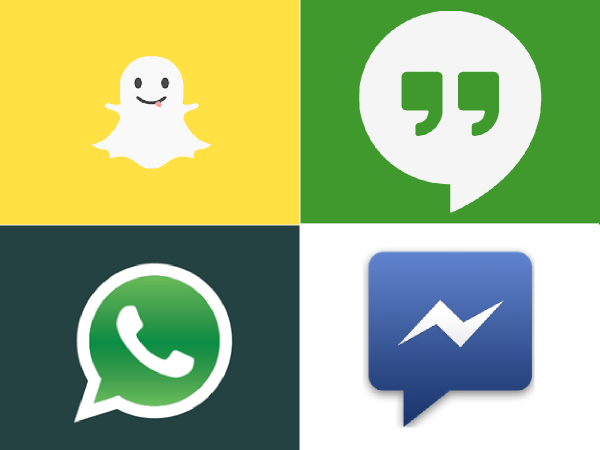
Mobile Messaging apps barely existed five years ago. In fact, Blackberry Messenger stood alone as the only non-SMS platform available for quite some time. Today, MMS is an industry measured in BILLIONS – billions of dollars, billions of users.
Just let that sink in for a moment.
From WhatsApp and WeChat to Hangouts and Facebook Messenger, it is estimated that one in five mobile phones in the U.S. have an external messaging app downloaded (and that number is even higher abroad). In fact, according to BI Intelligence, this year messaging apps have actually overtaken social networks in regards to active users – the top four messaging apps combined have just as many users as the top four social sites.

- WhatsApp, Facebook Messenger, WeChat, and Viber have 2.125 billion combined monthly active users globally (users who accessed the apps at least once in a 30-day period). And these are all mobile users.
- That’s compared to the same number, 2.125 billion, of users on Facebook, Twitter, LinkedIn, and Instagram combined. And this is mobile and desktop users.
While the “top mobile messaging apps” continue to jockey for position (we can see different claims to the leader board here and here), the user numbers alone mean that we marketers cannot ignore these platforms. In fact, it has been said that apps just like these are “America’s favorite time killers.”
But how do we advise brands to take advantage of this audience?
1. Remember: connecting via mobile messaging apps is only a tactic. To be truly successful, this tactic must map back to your overarching strategy. As I always say, “There is only one strategy, a handful of mediums and countless tactics.”
2. Research the demos using these apps. Each app has an over-indexing age group, geographic location, etc. For example, it would not be a good idea to launch a WhatsApp campaign in China
3. Understand why consumers are using an app over SMS.
- More emojis, digital stickers, GIFs, voice and video recording, etc.
- Seamless conversations from mobile device to desktop
- An overall better user experience
4. Find how your brand fits into that demo and those needs and what it can offer as digital currency. This is where creativity and ingenuity come into play!
- Issuing group challenges and games
- Exclusive behind the scenes access
- Personalized experiences
5. Think through your ongoing communication strategy. Unlike social media, messaging apps alert consumers to EVERY message. Overkill or unwanted info will erase you from their contact list and erase all of the hard work that went into recruiting them.
- How much contact do they want from you?
- How does what you are giving them change over time?
- What is the value exchange that keeps you relevant?

There are a few big questions still looming, too – how does Snapchat, a huge messaging player that regularly gets left out of the MMS conversation, play into this? How will smart watches change the industry? What other big media conglomerate will snatch up one of the little guys and alter the playing field yet again?
We don’t have all the answers, but we do know that these are conversations we should continue to have with our clients. What are some interesting messaging campaigns you’ve seen? Let me know in the comments below.
And if you want to hear more about what messaging apps to watch and how to use them for brands, be sure to tune into my PR News Taste of Tech panel on October 5th at 4pm ET. We will be live streaming through Periscope, @PadillaCRT.
